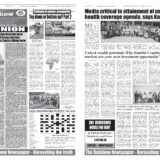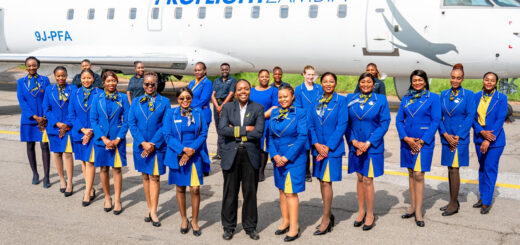HH reviving Zambia’s economy, brags Mbala MP Njavwa Simutowe
Notice: Undefined index: catFilterList in /home/zambi/public_html/wp-content/plugins/wp-likes/api.php on line 243
 HH reviving Zambia’s economy, brags Mbala MP Njavwa Simutowe
HH reviving Zambia’s economy, brags Mbala MP Njavwa Simutowe
By Derrick Sinjela
Northern Province domiciled Mbala Member of Parliament (MP) Njavwa Simutowe believes President Hakainde Hichilema’s United Party for National Development (UPND) Alliance New Dawn Administration is setting Zambia on a promising socio-economic trajectory, capable of ameliorating vulnerability and feminisation of poverty built by a tripartite woe of high-income inequality, high poverty and high unemployment.
As skeptics continue to tag complacency as UPND’s biggest liability attributing economic challenges to Patriotic Front (PF) leadership of Dr. Edgar Chagwa Lungu and former First Female Vice President Inonge Mutukwa-Wina, an optimistic Mr. Simutowe says Zambia is going to see a great transformation in all sectors due to President Hichilema’s prudential leadership which abhors extravagance preferring frugality in public resource spending.
“Zambia is witnessing tremendous development socially, economically and politically. Zambia will be at a higher level in terms of attaining development in all sectors of the economy as the current leadership is meaningfully walking the actual talk compared to the past PF regime which walked the talk of denting her development,” predicted Simutowe citing increased Constituency Development Fund (CDF) from a meagre K1.6 million to K28.3 million as testament that Hichilema and Zambia’s Second Female Vice President Witner Kapembwa Mutale-Nalumango are empowering grassroot communities.
On Friday, 29th December, 2022, UPND Alliance MP for Chisamba, Ms. Chushi Kasanda, serving dual role as Minister of Information and Media (MIM) and Chief Government Spokesperson saw distribution of 26 CDF vehicles by Minister of Local Government and Rural Development (MLGRD) Mr. Gary Chilala Nkombo as evidence that devolution of power is President Hichilema’s priority number one.
“Fellow citizens, today, your Government dispatched 26 out of the 156 Constituency Development Fund vehicles meant for monitoring the implementation of CDF programmes and projects. All constituencies will receive these motor vehicles which will be distributed in different batches. The increase in the scope and allocation of the CDF from K1.6 million in 2021 to K25.7 million in 2022 and a further increase to K28.3 million in 2023, is a clear demonstration of a resolve to entrench decentralisation at the centre of development and service delivery through the use of sub-district structures.
Our vision is to ensure that we empower local communities in driving the development agenda.
Our appeal is that these vehicles should ONLY be used for the intended purpose,” boasted Ms. Kasanda.

Local Government and Rural Development (LGRD) Minister Gary Chilala Nkombo (Left), Local Government and Rural Development Ministry (LGRDM) Permanent Secretary (PS) for Administration Maambo Haamaundu (Second Left), Lusaka Mayor Chilando Chitangala (Second Right) and former 6th Republican President Dr. Edgar Chagwa Lungu at the Anglican Cathedral of the Holy Cross in Lusaka
Building on Ms. Kasanda’s enthusiasm, Simutowe says Zambia’s 19,610,769 million people are becoming better as the poor at community level continue to participate in actualizing decentralization through increased access to CDF in all the 156 Constituencies and 116 districts of the 10 provinces; Central, Copperbelt, Eastern, Luapula, Lusaka, Muchinga, Northern, North-Western, Southern and Western.
According to Central Statistical Agency, Zambia’s population as of Thursday, 8th September, 2022 was 19,610,769.
“The male population was 9,603,056 and the female population was 10,007,713,” said Statistician General (SG) Mr. Mulenga Musepa.
” As I talk now, Mbala people are very are cheered up with increase of Constituency Development Fund, which is boosting incomes,” Simutowe bragged citing hospitals, markets and hospitals as recipients.
By Press Time, construction of a couple of schools works was at 80 percent completion point, whilst hospital projects, sponsorship of students at Lukashya Skills Training Center (LSTC), is on course.
“In 2022, using CDF resources, 16 students in secondary schools, 27 peers at LSTC benefited and in 2023, we have sent 91 students to Lukashya Skills Training Center,” Simutowe said.
Simutowe says at Chalamanga and Kakonde, construction of two classrooms is on course and in Kaluluzi a maternity ward is being built using CDF.
“I urge youths in Mbala to take advantage of CDF resources and contribute in bringing development to Mbala Town,” prayed Simutowe.
As a UPND Candidate, Simutowe born on Wednesday, 3rd November, 1971, beat PF candidate for Mbala Central, Charles Sipanje , Socialist Party candidate, Naomi Nanyangwe and Independent candidate George Siame, but Democratic Party candidate, Volley Simwiinga failed to file in after his nomination was rejected by the Electoral Commission of Zambia (ECZ) for not being appropriately signed.

President Hakainde Hichilema and Brandford Machila (far right) welcome US Vice President Ms. Kamala Devi Harris at State House on Friday, 31st March, 2023
Mbala is a constituency of the National Assembly of Zambia (NAZ) covering Kawimbe, Lunzua and Mbala towns in Mbala District of Northern Province.
Originally known as Abercorn, the list of MPs as Abercorn Constituency to date are:
1964 James Sinyangwe United National Independence Party
1964 (by-election), Rankin Sikasula UNIP,
Seat was abolished (split into Mbala North and Mbala South)
Mbala.
1973 Edward Chitupi (UNIP), 1978 and 1983 Ablam Chitala (UNIP, 1988 Lightwell Sibale UNIP, 1991 Derick Chitala (Mbita Chitundya Chitala Movement for Multi-Party Democracy (MMD),
1996 Ronald Penza MMD,
2001 and 2006 Gaston Sichilima MMD,
2011 Mwalimu Simfukwe MMD and
2016 on Patriotic Front ticket and incumbent
2021 Njavwa Simutowe of the UPND.

Mbita Chitala picture by Jean Mandela -javascript: void(0)
With a population of about 20,000 in 2006, under the name Abercorn, Mbala was a key outpost in British colonial control of this part of South-central Africa.
Zambia’s most northerly large town and seat of Mbala District in Northern Province, is a strategic location close to the border with Tanzania and controlling the southern approaches to Lake Tanganyika, 40 km by road to the north-west, where the port of Mpulungu is located within the Great Lakes Region.
A number of archaeological sites in the area Kalambo Falls provide a record of human activity in the Mbala area over the past 300,000 years.
Before colonial times, Mbala was the village of Chief Zombe on the Lucheche River.
It became the focus of British interest as a result of travels by the explorer David Livingstone, the first European to visit the area, in the 1860s.
Scottish Explorer Livingstone was followed some years later by Verney Lovett Cameron who surveyed Lake Tanganyika.
Livingstone inspired missionaries of the London Missionary Society to come in the 1880s to Niamkolo on the lake and Fwambo and Kawimbe on the plateau.
These missions had links to the African Lakes Company which later set up in Mbala and Mpulungu. The area was ravaged by the slave trade during much of the 19th Century, and the African Lakes Company devoted some efforts to trying to stamp it out. This activity drew in the representative of the British Government in the region, Harry Johnston in Nyasaland, and decisions were taken to strengthen the imperial presence south of the lake and prevent other colonial powers establishing a foothold there.
The Mbala War Memorial, where von Lettow-Vorbeck formally surrendered at the end of the First World War, designed by Sir Edwin Lutyens.
As a result, the colonial era began in Mbala in 1893, earlier than in most other areas of what would become Zambia, when Hugh Marshall was sent by Johnston as the British Consul for the area. Marshall built a well-fortified boma at Chief Zombe’s village and acted as Magistrate and Postmaster.
In 1895, the British South Africa Company took over administration of the territory, called it North-Eastern Rhodesia, and the ‘Zombe boma’ became known as Abercorn, named after the company chairman. The site was favoured by British administrators as being healthy and having a pleasant climate with plenty of hunting and fishing. Until German East Africa was taken over by Britain in 1919 as Tanganyika, Abercorn and the smaller Chiengi boma on Lake Mweru were the most northerly outposts of British southern Africa.
During World War I Mbala was a focus of the unsuccessful British military effort to defeat German General von Lettow-Vorbeck’s German army, and British forces were concentrated there.
After Germany’s surrender in Europe, von Lettow-Vorbeck formally surrendered at Mbala on 25 November 1918, though he had agreed a ceasefire at the Chambeshi River 250 km south nine days earlier. The Mbala War Memorial marks the spot of the formal surrender about 2 kilometers (km) south-west of the centre of town. Following the surrender ceremony, the German troops were ordered to throw their weapons into Lake Chila.
Polish refugees from General Anders’ army arrived there during World War 2 and were housed in a camp.
A cemetery with Polish tombstones testifies to their past presence.
After Zambia’s independence in 1964, the name of the town was changed back to Mbala.
Since its heyday as a colonial town in the 1950s and early 60s, Mbala has suffered some decline, and has lost out in development terms to the provincial capital, Kasama, and Mpika, which have better road and rail connections. Although the Mbala area has fertile soils and plenty of water, it is far from urban markets and transport costs limited the viability of most agricultural crops. Similarly, while it has tourist potential it is a bit too far off the main tourist routes and the poor state of the main highway and the lack of regular air services discourage visitors. There is one hotel but no resorts in the immediate area, the nearest being those in Nsumbu National Park such as Kasaba Bay, 100 km away, but there is no road link there − in fact the lack of a road serving the south-western side of the lake, which is mountainous, is a serious barrier to tourism or to any development there. Kalambo Falls is an attraction, but is not accessible throughout the rainy season. Wars and unrest on the eastern and northern shores of Lake Tanganyika have also hindered trade and tourism on the lake, which has not given Mbala and Mpulungu the advantages of their location. With recent steps towards resolution of those conflicts, the future may be brighter. The population was 16,963 in the 2000 census.
Geography and transport
The town is at the edge of the plateau covering most of Zambia, at an elevation of 1670 m, about 900 m higher than Lake Tanganyika, which comes within 22 km (straight-line distance). The escarpment above the lake is the end of the Albertine Rift, the western branch of the East Africa Rift, and the Mbala area experiences occasional earth tremors. It is also said that the tiny but picturesque Lake Chila within the town experiences inexplicable drying out, and sudden flooding from underground springs, but this may be just a legend.
The second highest waterfall in Africa, Kalambo Falls lies about 40 km (by road) north west, and is formed where the Kalambo River comes over the Rift Valley escarpment.
Mbala is on the old Great North Road (M1 road) 165 km north of Kasama, and at one time was the end of that road.
It has been paved and as of late 2008[needs update] is in poor condition, with large patches of pavement missing, and stretches have reverted to a dirt road. However, work crews were patching the road in late 2008,[needs update] with one crew starting in Kasama, and the other starting from Mbala. Since it is the only paved highway access to the town and district, as well as to the port of Mpulungu, its poor condition is a major barrier to development in the area. Buses run daily from Mbala to Kasama and Lusaka, the capital.
Mbala is 25 km from the border with Tanzania and connected by a dry-season road to one of only two road border crossings between the two countries. It is not much used, the road beyond the border is a dirt track impassable in the rainy season.
The paved road which winds down the escarpment to Mpulungu (the M2 road) affords scenic views and passes close to Lunzua Falls. From Mpulungu the MV Liemba provides a boat service to other ports and countries on the lake. In the 19th century the lake was an important entry point to the territory of northern Zambia, by boat from Ujiji, which was reached by an overland trade route from the Indian Ocean coast near the island of Zanzibar.
Mbala has an airport but does not currently receive scheduled services, though it has a 2.6 km runway and was once a Zambian Air Force Base.
Climate
Attractions
Moto Moto Museum — a museum of Mambwe/Lungu culture, named after the French Catholic bishop Joseph Dupont, nicknamed Moto Moto.
Mambwe/Lungu People’s Mutomolo harvest thanksgiving ceremony at Lake Chila. – Kwilanzi Newspaper Zambia (KNZ)/Wikipedia.























